Alumni News
Alan Schechter's Former Postdocs
Following is a sampling of Alan Schechter’s former postdocs and staff (the ones who gave presentations at the June 27, 2016 symposium honoring Schechter), where they are now, when they trained or worked with Schechter, their research interests, and what they have to say about their mentor. Schechter, who’s a senior scientist in and chief of the Molecular Medicine Branch in the National Institute of Diabetes and Digestive and Kidney Diseases (NIDDK), has focused his research on developing treatments for genetic diseases of hemoglobin, including sickle-cell disease.
DAVID H. SACHS, M.D.
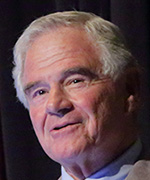
Professor Emeritus, Harvard Medical School, Boston; Professor of Surgical Sciences, Columbia University Medical Center, New York; Scientific Director, Transplantation Biology Research Center Laboratories, Center for Transplantation Sciences, Massachusetts General Hospital, Boston
Education: Harvard University, Cambridge, Mass. (A.B in chemistry); University of Paris, Paris [D.E.S. in organic chemistry (M.S. equivalent)]; Harvard Medical School (M.D.)
NIH: Laboratory of Chemical Biology: Research associate (1970–1972)
Research: Transplantation biology, with an emphasis on understanding and manipulating transplantation immunity and tolerance.
Comment: This was a very important two-year period for me—two years that were highly productive. Since I had previously done work with nuclear magnetic resonance (NMR) spectroscopy, Alan and I began our studies together by investigating the potential of using NMR to examine protein structure. These experiments were followed by a series of studies, together with Chris Anfinsen, using antibodies to study the conformation of Staphylococcal nuclease. Working with Alan was always a privilege and a pleasure.
GRIFFIN RODGERS, M.D.
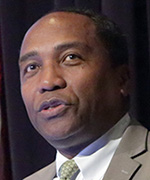
Director, NIDDK
Education: Brown University, Providence, R.I. (Sc.B., M.M.Sc., M.D.); Carey Business School, Johns Hopkins University, Baltimore (M.B.A.)
Laboratory of Chemical Biology: Postdoctoral training (1982–1987); senior staff fellow (1988–1990); senior investigator (1990)
Other positions in NIDDK (1991–present): chief, Molecular Hematology Section; chief, Molecular and Clinical Hematology Branch; deputy director (2001–2009), acting director (2006–2007), and then director, NIDDK (2007–present)
Research: Sickle-cell anemia; widely recognized for his contributions to the development of the first effective—and now FDA-approved—therapy for sickle-cell anemia, the drug hydroxyurea.
Comment: Alan has taught me quite a bit about not only the science of medicine, but also the “art” of medicine, particularly when it comes to negotiations and subtle diplomacy. His mentorship has been quite useful to me in my frequent trips to Congress to try to educate members and their staff about the mission and goals of our institute.
ANDRÉ VAN STEIRTEGHEM, M.D., PH.D.
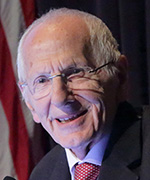
Emeritus Professor of Embryology and Reproductive Biology, Vrije Universiteit (the Free University) in Brussels
Education: Vrije Universiteit Brussels (M.D. and Ph.D.)
NIH: Clinical Center: Visiting fellow, Clinical Chemistry Department (1974–1977), Schechter was his prime mentor
Research: One of the leaders in the field of in vitro fertilization (IVF); developed and led the renowned IVF program at the university’s medical school since the early 1980s. His program has been responsible for about 20,000 successful pregnancies. (Read more about Van Steirteghem’s work in the March-April 2014 issue of the NIH Catalyst at https://irp.nih.gov/catalyst/v22i2/alumni-news.)
Comment: The NIH experience was a determining factor in my career. Thanks, Alan, for your mentorship.
JAY A. BERZOFSKY, M.D., PH.D.

Chief, Vaccine Branch, Center for Cancer Research, National Cancer Institute
Education: Harvard University, Cambridge, Mass. (A.B. in chemistry); Albert Einstein College of Medicine, New York (Ph.D. in molecular biology; M.D.)
NIH: Laboratory of Chemical Biology: Research associate (1974–1976); National Cancer Institute (1976–present): Has held various leadership positions; became chief of Vaccine Branch in 2004
Research: Antigen processing and presentation by major histocompatibility complex molecules; the structure of antigenic determinants; cytokine and regulatory-cell control of T-cell function and avidity; NKT cells in immune regulation, tumor immunology, HIV and mucosal immunity and translation to the design of vaccines for AIDS, cancer, and viruses causing cancer.
Comment: My research with Alan introduced me to immunology and converted me from a protein chemist to an immunologist. I owe a lot to Alan for leading me in a new direction that set the stage for the rest of my career in immunology. He also taught me peptide chemistry, which was a major foundation for much of my future research.
NEAL YOUNG, M.D.
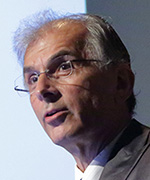
Chief, Hematology Branch, National Heart, Lung, and Blood Institute; Director, Trans-NIH Center for Human Immunology, Autoimmunity, and Inflammation
Education: Harvard University, Cambridge, Mass. (A.B.); Johns Hopkins School of Medicine, Baltimore (M.D.)
NIH: Laboratory of Chemical Biology: Research associate (1973–1975)
Research: Bone-marrow failure. (Read more about Young’s work in the May-June 2013 issue of the NIH Catalyst: https://irp.nih.gov/catalyst/v21i3/neal-young-conquering-aplastic-anemia.)
Comment: Alan taught me, very patiently, to think rigorously and quantitatively—a little bit like a P.hD. And he has remained a friend and mentor for decades.
BRUCE FURIE, M.D.
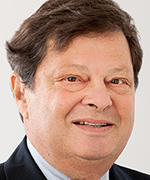
Professor of Medicine and Director of the Blood Coagulation and Vascular Biology Training Program, Harvard Medical School, Boston; Chief of Hemostasis-Thrombosis at Beth Israel Deaconess Medical Center, Boston
Education: Princeton University, Princeton, N.J. (A.B.); University of Pennsylvania, Philadelphia (M.D.)
NIH: Laboratory of Chemical Biology: Two years in the mid-1970s
Research: Hemostasis and thrombosis; role of thiol isomerases in thrombus formation; has made landmark contributions to the understanding of the structure, biochemistry, and function of coagulation and platelet proteins.
Comment: I am very grateful for all the generous support and sage advice that my wonderful mentors, Christian Anfinsen and Alan Schechter, provided along the way. My time in their lab represented two very important years in my life. I was exposed to biophysics and quantitative biology in a world-class laboratory. I was taught not to be afraid of doing novel techniques.
JACQUES ELION, M.D., PH.D.

Professor of Biochemistry and Molecular Biology at Paris Diderot University Medical School, Paris; Former Director, Department of Medical Genetics at Robert Debré Mother and Child University Hospital, Paris; Director of Research , Unit 1134 of of the French National Institute of Health and Medical Research (Inserm), Paris; and Guadeloupe, French West Indies
Education: Paris Descartes University Medical School (M.D.); Paris Diderot University (Ph.D.)
NIH: Molecular Medicine Branch: Fogarty Visiting Scientist position (1985–1986)
Research: Pathophysiology of sickle-cell disease and the identification of new therapeutic targets; identified several genetic markers contributing to the clinical variability of the disease.
Comment: Working at NIH with Alan 30 years ago in the late 1980s was a great experience. It has been the privileged occasion to work alongside and get inspiration from many brilliant and sharp-minded individuals among whom stood Alan with his broad and profound view of science in medicine and medicine in science.
MARK T. GLADWIN, M.D.
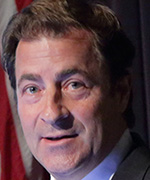
Jack D. Myers Professor and Chair of Medicine, University of Pittsburgh; Co-director, University of Pittsburgh Medical Center Heart and Vascular Institute; Director, Pittsburgh Heart, Lung, Blood, and Vascular Medicine Institute
Education: University of Miami Honors Program in Medical Education, Miami, Fla. (B.S. and M.D.)
NIH: Clinical Center: Critical care fellow (1995–1996); senior research fellow (1998–2000); Laboratory of Chemical Biology: Tenure-track investigator (2001–2004); senior investigator (2004–2005); NHLBI: various positions 2005–2008, including director of NHLBI Functional Genomics Core and Chief, Pulmonary and Vascular Medicine Branch
Research: Pulmonary hypertension, nitrite biochemistry and signaling, and pulmonary complications of sickle-cell disease.
Comment: Lessons from Alan Schechter: Think big and appreciate what the big questions are in science; your best work will likely arise from your studies of normal volunteers; appreciate fundamental science; focus on the clinic, answer questions with translational methodologies as much as possible.
VLADAN COKIC, M.D., PH.D.
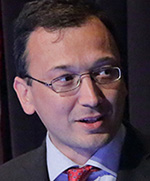
Professor of Research and Principal Investigator, Laboratory of Experimental Hematology, Institute for Medical Research, University of Belgrade, Belgrade, Serbia
Education: Belgrade University School of Medicine, Belgrade (M.D., M.S., Ph.D.)
NIH: Molecular Medicine Branch: Visiting fellow (1999–2004)
Research: Nitric oxide mediated globin genes induction, erythroid differentiation, pathogenesis of myeloproliferative neoplasms (translational research)
Comment: It was a great pleasure to have the opportunity to do research in Alan’s lab, and I’m grateful for his mentorship, confidence, and continued support.
CONSTANCE NOGUCHI, PH.D.
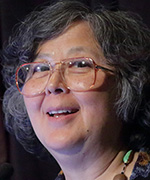
Chief, Molecular Cell Biology Section, Laboratory of Chemical Biology, NIDDK; Dean, Foundation for Advanced Education in the Sciences Graduate School at NIH
Education: University of California, Berkeley (A.B. in mathematics and physics); George Washington University, Washington, D.C. (Ph.D. in physics)
NIH: Laboratory of Chemical Biology: Fellow (1975–1977); staff fellow (1977–1979); other fellow positions (1979–1985); other positions (1985–present)
Research: Identifying progenitor-cell response to erythropoietin and the potential for therapeutic intervention in hematopoietic diseases and beyond.
Comment: Alan would get Ph.D.s to think like M.D.s and about how our research would apply to health and disease. He tried to get M.D.s to think like Ph.D.s in terms of structured mechanisms.
BARBORA PIKNOVA, PH.D.

Staff Scientist, Laboratory of Chemical Biology, NIDDK
Education: Comenius University, Bratislava, Slovakia (M.S. equivalent; Ph.D.)
NIH: Laboratory of Chemical Biology: Contractor staff scientist (2005–2010); staff scientist (2010–present)
Research: Basic mechanisms influencing microcirculation during functional hyperemia; the use of dietary intervention to modulate skeletal-muscle blood flow in aging, during exercise, and in neuromuscular diseases, especially in Duchenne muscular dystrophy.
Comment: When I came to NIH, I was a biophysicist with no experience in physiology. Dr. Schechter showed me how to ask (and answer) physiology questions in physical-chemistry language. That was a big step for me and I’m thankful that he took me under his wing.
To watch a videocast of the June 27 symposium, which was titled “Yellow Berets to Gray Hair: Training Physicians for Research Careers,” go to https://videocast.nih.gov/launch.asp?19773.
This page was last updated on Wednesday, April 13, 2022
